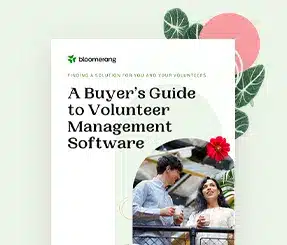[ASK AN EXPERT] The Hard Truth: Should Every Board Member Be Expected To Give And Fundraise?


Full Platform Overview Chat With Us



Full Platform Overview Chat With Us




Our Ask An Expert series features real questions answered by Claire Axelrad, J.D., CFRE, also known as Charity Clairity. Today’s question comes from a nonprofit employee who wants advice on how to strengthen board engagement:
Dear Charity Clairity,
I’m trying to shift our board culture away from “I’ll do anything but fundraising” and toward shared responsibility. Too many of our board members don’t give, or say they support fundraising in theory but avoid it in practice.
I’d love your take: Should we require a personal contribution and/or some form of fundraising involvement from every board member? Have you seen this work in ways that feel doable—and that actually strengthen board engagement rather than backfire?
— Culture Changer-in-Progress
Dear Culture Changer-in-Progress,
You’re not alone—and you’re absolutely right to raise this question. When board members sidestep both giving and fundraising, it puts staff in an impossible position and sends a confusing signal to donors. If the people closest to the mission don’t lead, why should anyone else follow?
Requiring board members to give and participate in fundraising isn’t about pressure—it’s about building a shared culture of philanthropy, where everyone takes ownership of the mission’s success. A clear give/get policy can help shift things from “optional” to “expected,” without being one-size-fits-all. It invites each board member to contribute in ways that reflect their own capacity, relationships, and energy—not just their checkbook.
For giving: The amount doesn’t need to be the same across the board. What does matter is that each member gives at a personally significant level—ideally one of their top philanthropic gifts—so they can authentically say to others, “Join me.” That personal commitment unlocks credibility. It also unlocks the board member’s own passion, making it easier and more natural for them to serve as ambassador, advocate, and asker of other supporters.
For getting: Fundraising expectations should be flexible, but not vague. Some board members may connect donors directly; others might help host events, tell their story in a donor meeting, or work with staff to cultivate a few assigned mid-level or major prospects. You’re not asking everyone to be a rainmaker—you’re inviting them to be active partners.
At the same time, it’s essential to avoid a dynamic where only wealthy individuals feel welcome because they can “buy” their way in—either by giving large gifts themselves or calling in favors from wealthy friends. That’s not equity, and it’s not sustainable leadership. A good give/get structure balances the load and emphasizes shared responsibility, not uniform contribution.
And don’t underestimate the power of ambassadorship. Every board member should be an advocate, proudly inviting others to know more, care more, and do more for your organization. That kind of engagement often leads to giving—sometimes big giving—but it always starts with authentic belief.
You’re not just trying to raise more money. You’re trying to build a board that sees fundraising as part of its purpose, not someone else’s job. That takes time, coaching, and a shift in culture—but it’s absolutely possible.
Let me share a quick example:
A mid-sized legal services nonprofit faced a common challenge: most of their 18 board members gave modest amounts—$100, $250, sometimes less. Many believed those gifts were already meaningful because they were “what they usually give” or “what they could easily afford.” But in reality, those gifts were often automatic, unconsidered, and well below what they might genuinely prioritize if asked thoughtfully.
To address this, we introduced a board giving policy that emphasized not just giving, but giving at a personally meaningful level—meaning a gift that requires real intention and reflects a true priority for that individual. This sparked honest conversations about what that really looked like.
The board chair led by example, sharing how he reflected on his overall philanthropic giving and chose an amount that was truly significant to him—not just convenient. It was quadruple what he’d given before. Once he made the commitment, his passion was unleashed! He then met individually with board members to explore their giving habits and gently challenge them with: “Is this something you can proudly say is one of your top philanthropic gifts, or just a default amount?” They began to understand the difference between a habitual gift and a gift that truly mattered to them.
Over 18 months, average board giving tripled—not because of pressure, but because the board began to see their giving as intentional leadership, a reflection of their real commitment. That shift also energized their fundraising roles: One hosted a house party, while another encouraged colleagues at his firm to consider an institutional gift. The new policy, and shared commitment, created powerful momentum.
Changing a board’s giving culture isn’t about coercion—it’s about clarity, commitment, and creating a sense of shared ownership. When every member gives with intention and engages authentically in facilitating philanthropy, they become more than supporters; they become true leaders. The hard truth? Your nonprofit’s future depends on it.
Onward,
— Charity Clairity (Please use a pseudonym if you prefer to be anonymous when you submit your own question, like “Meetings, but No Movement” did.)
Is your organization trying to strengthen board engagement? Let us know in the comments.

Comments